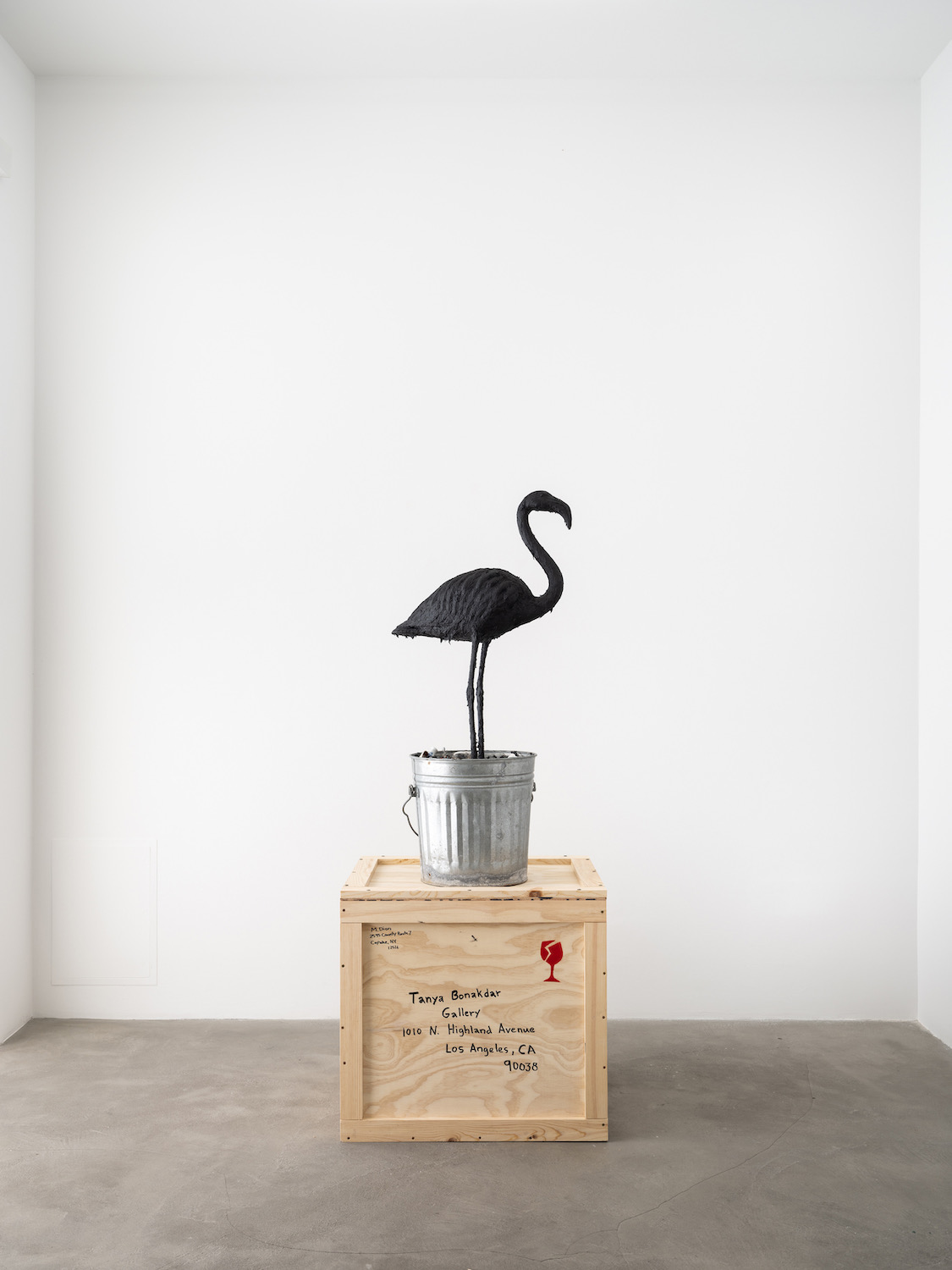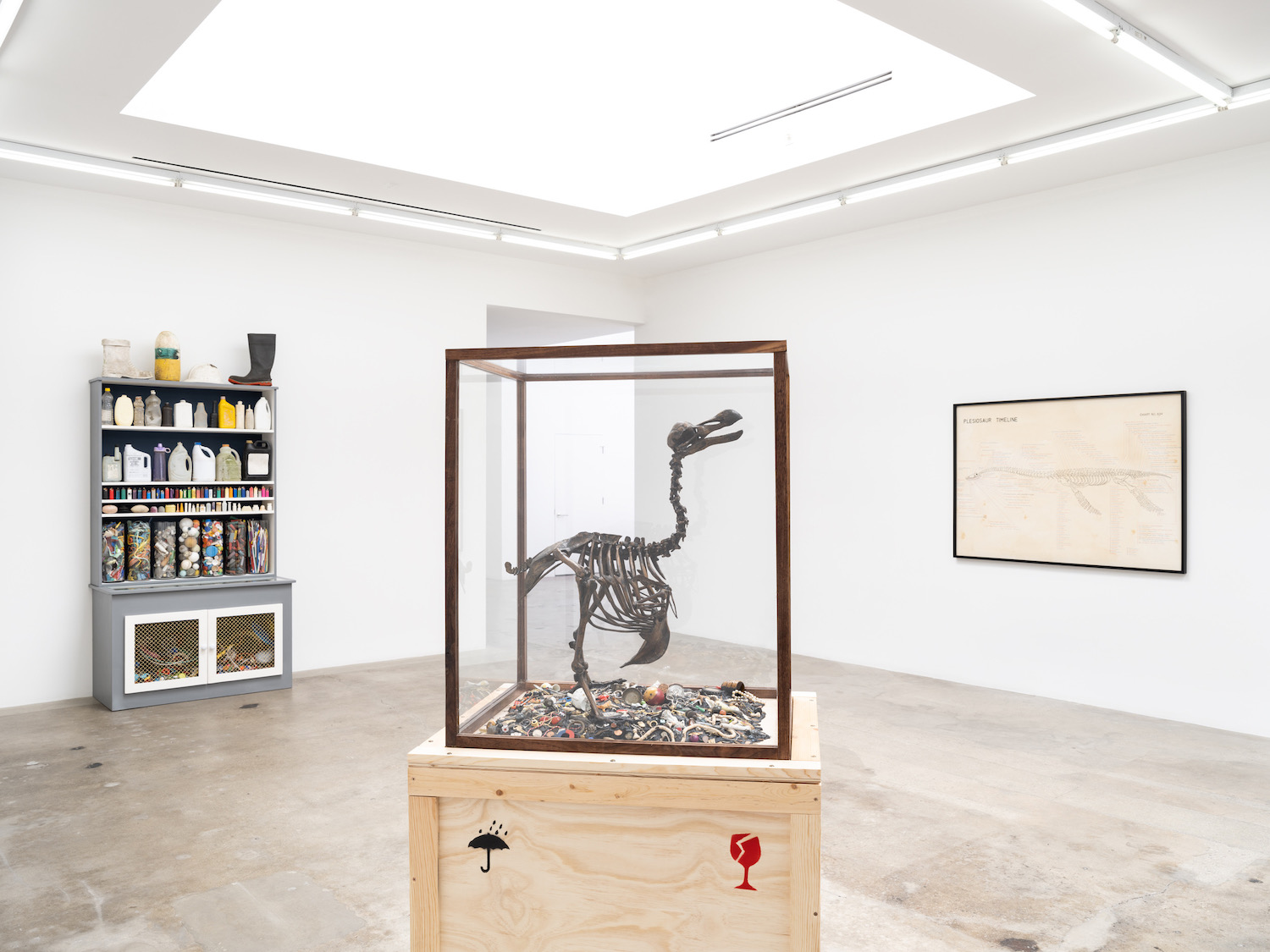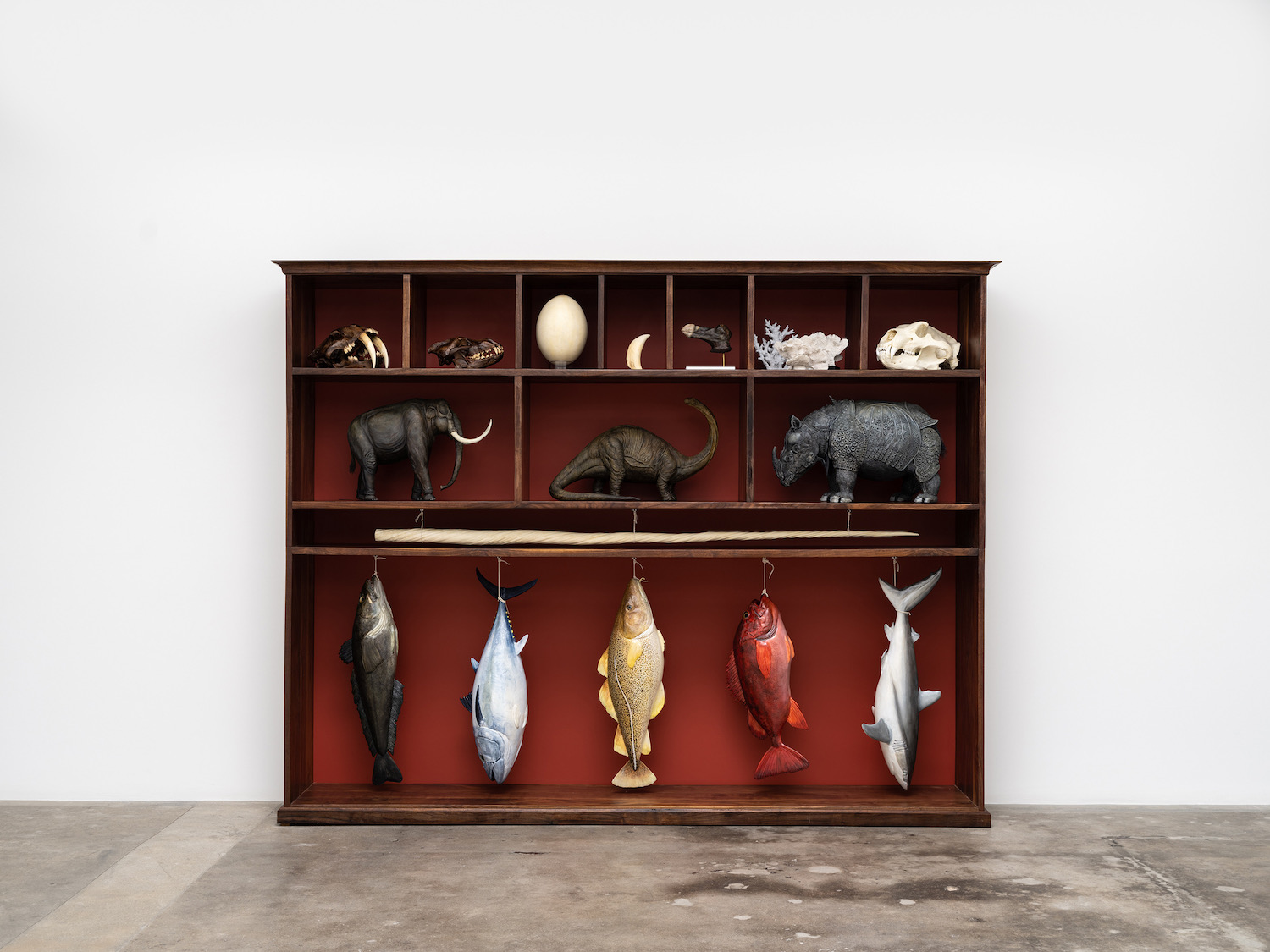Mark Dion is best known for his conceptual artworks that riff on traditional historical or scientific presentations. He begins by collecting objects and researching a specific subject or locale, then merges his findings into evocative artworks that have an air of authority evoking museological displays, despite their fictitious apsects. For his first solo gallery exhibition in Los Angeles, Dion has created Theater of Extinction, an installation of sculptures and drawings that examine plants and animals that are threatened and on the verge of extinction. Many of these works take the form of annotated charts that juxtapose handwritten texts and quasi-scientific drawings of skeletons or different species.

Mark Dion, Tar and Feathers – Flamingo, 2019; Courtesy of the artist and Tanya Bonakdar Gallery, New York / Los Angeles; Photo: Ruben Diaz.
The main space features Dion’s sculptures— some paralleling natural history museum displays, others akin to cabinets of wonder— works that combine found objects with authentic animal skeletons that speak to how climate change and other human planetary degradations have affected the natural world. In Tar and Feathers – Flamingo (2019), a tar-covered flamingo stands in a small aluminum trash can filled with trinkets and lost objects like pottery shards, pearl necklaces, old watches, keys, dice and myriad coins. The stagnant, goopy bird covered in black tar represents the suffering of animals killed by oil spills. That it is paired with the same detritus that also clutters the oceans reinforces Dion’s message.

Installation view of Theater of Extinction, 2022; Courtesy of the artist and Tanya Bonakdar Gallery, New York / Los Angeles; Photo: Ruben Diaz.
The objects collected and displayed in Cabinet of Extinction (2022) include five stuffed fish in varying colors though all the same size, model-sized replicas of a dinosaur, a long tusked elephant or mammoth and Durer’s rhinoceros, as well as various skulls of extinct animals, coral, teeth and a giant egg. These objects are arranged in individual cubbyholes within a large wooden cabinet. Contrasting this arrangement of creatures and their parts is Cabinet of Marine Debris – East Coast/West Coast (2022), a tall gray cabinet with shelves displaying items collected from the oceans on both coasts. Included in glass jars, or standing in a line on a shelf are cigarette lighters in every imaginable color, as well as collections of ropes, bottles, balls of all shapes and sizes, as well as multi-color plastic shotgun shell casings — another reminder of the amount and variety of trash that finds its way into the sea.

Mark Dion, Extinction Vortex, 2021; Courtesy of the artist and Tanya Bonakdar Gallery, New York / Los Angeles; Photo: Ruben Diaz.
Dion’s works on paper are also focused on environmental wrongs, though they are less didactic and more humorous than his sculptures. Some Noteworthy Bird Beaks (2022) is a black and white roll-up banner displaying a range of bird beaks under which Dion has written artist’s names — John Baldessari, Hanne Darboven, Hans Haacke, and Adrian Piper for example, connecting two disparate worlds. Ecological Oriented Art Practice (2021) connects different art movements to the various body parts of a squid. In both these works, Dion draws with white ink on black ground. Pieces such as Extinction Vortex (2021), Anatomy of Global Warming (2021) and The Stegosaurus of Alfred H. Barr, Jr (2020) are modest sized framed drawings made with pen or colored pencil on paper. These works are modeled on scientific drawings where each part of the animal depicted is labeled and notated. Dion shifts the focus from labeling body parts to calling out the numerous ways humankind has contributed to the destruction of the planet and global warming in Anatomy of Global Warming and Extinction Vortex, whereas in The Stegosaurus of Alfred H. Barr, Jr, he links the bones from a stegosaurus’ skeleton to different people and movements from the history of art.
Dion’s works may seem convincing, but are also illogical and absurd. In many ways, that is his point: while calling attention to imminent dangers facing the world today, he simultaneously creates charming, masterful, ironic and poignant works.
MARK DION: THEATER OF EXTINCTION
TANYA BONAKDAR GALLERY, LOS ANGELES


